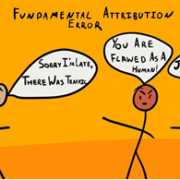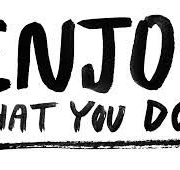YOU’RE RUDE BUT I’VE BEEN DELAYED
We’ve all been late and we’ve all been kept waiting by someone who is late. We almost certainly see those two situations through very different lenses. It’s called attribution.
Attribution is a technical term in social psychology to describe the conclusions we jump to (often the only exercise we get in the day), about why something happened. We all use it all the time, usually unconsciously, and all our biases are there to see (if we bother to look).
The interesting thing about attribution is that we are very kind to ourselves. When we are late to a meeting for example, we tend to put the cause on external factors and not our personal failings. You know that the traffic was really bad, the client in the previous meeting kept talking, or a crisis at home came up.
But if we are the person waiting for someone else to turn up to a meeting, we easily jump to attribute the lateness to factors internal to the person. Disrespectful of others time, disorganized, life in chaos. Go on, you know you’ve thought it.
How to explain this? Well, we have lots more information about our own situation than we do about other people’s. When it comes to explaining your own actions, you know the variables at play. When you’re trying to explain another person’s behavior, you only have what is readily observable.
Just knowing this can really help in two ways. First in being more honest about your own behaviour. Some internal attribution will ensure you take at least some responsibility. Second, a little external attribution to other people’s failings, will allow you to cut them slack. We could all do with being a little less judgy of others and little more honest about ourselves.










